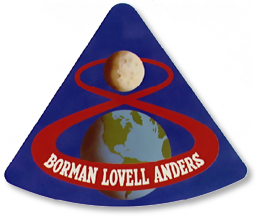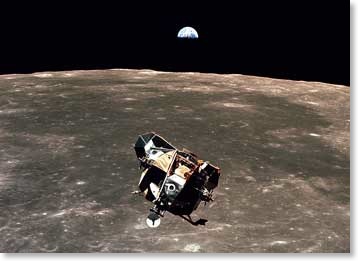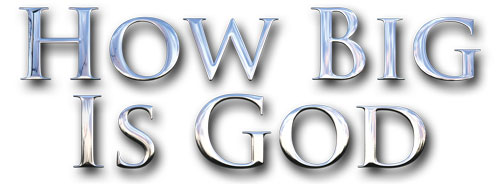
OUR AMAZING MOON
Our Amazing Moon (parts 1 and 2)
This article is placed by permission from David Rives Ministries. The original articles can be found here and here.In the book of Genesis, we’re told that the Creator made the Moon on the fourth day, to be for lights in the firmament of the heaven. Just how special is our Moon? Was it created without purpose, as today’s scientists suggest? In this article we will discuss the Moon which was created as the main light source to govern our night skies.

The Moon is 239,000 miles from Earth; it’s just over a quarter the size of the Earth, and compared to its host planet it is the largest proportionally of all the other moons in the Solar System.
Ocean tides here on Earth are created by the gravity of the Moon, which helps to circulate the warm and cold waters of the ocean. Unlit areas of the Moon’s surface can reach a shuddering temperature of -280 degrees Fahrenheit, while the “sun-lit” daytime portions suffer temperatures of up to +260 degrees Fahrenheit.
An occurrence known as “Libration” results in the Moon “rocking” back and forth, allowing an observer to see a total 59 percent of the Moon’s surface.
Unlike the Sun, the Moon does not generate its own light, but has a reflective surface, which enables it to produce light by way of the Sun’s rays shining on its face. Because of this very unique means of making light, we are sometimes entertained by an amazing spectacle known as a “Lunar Eclipse.”
Lunar eclipses occur as the Earth passes between the Sun and Moon, either directly or indirectly and can take place up to three times per year. We won’t see another total eclipse until the year 2010.
Our Moon occupies an elliptical, or oval shaped orbit around the Earth. As a result, its distance varies by about 26,000 miles at the nearest and farthest points in its orbital pattern. It completes one orbit of Earth about every 27 and one third days, and spins on its axis once each orbit. Throughout the lunar phases, it rises around fifty minutes later each night.
Conclusion (Part 1)
We are also told in the book of Genesis that the Moon was made to be a light for signs, seasons, days, and years. Yet, we are also told that a day is coming when the heaven and Earth as we know it will pass away, and we will have no more need for the light of the Sun, Moon or Stars.Isaiah 60:19 “The sun shall be no more thy light by day; neither for brightness shall the moon give light unto thee: but the LORD shall be unto thee an everlasting light, and thy God thy glory.”
Our Amazing Moon Part 2
Today, our government wants to take God out of the system, prayer out of the schools, and the Ten Commandments out of the courtroom. Many astronomers only talk about the Big Bang, and evolutionary theory. But has Government always been so adverse to God and the Bible?
There have been numerous theories of how the Moon originated, such as “The Fission Theory,” “The Capture Theory” and “The Nebular Theory.” The most recent is known as the “Giant Impact” or “Collision Theory.” “In this current (Collision Theory) scenario, the Earth was hit in a chance collision about 4.5 billion years ago by a Mars-sized object traveling through space at 25,000 MPH. The great collision partially melted both objects and threw massive debris into Earth orbit. The Earth then slowly recovered its spherical shape and the space debris finally coalesced into the orbiting moon.” Our Created Moon (pg. 47) by Dr. DeYoung and John Whitcomb.
However, there is one major problem with that theory. This is known as the ‘Roche Limit.’ “French astronomer Édouard Roche studied gravity effects on satellite moons. In 1849, he showed mathematically that a moon, (or in this case a large piece of debris) would be broken into pieces if it was located close to its host planet.” Our Created Moon (pg. 47) by Dr. DeYoung and John Whitcomb.
As a result of the “Roche Limit” the theorized 'Mars sized object' could not have possibly reached the Earth without being broken into pieces. Despite the attempts of secular scientists, to explain the origin of the Moon, each one has been replaced over time with a new evolutionary theory.
The surface of the Moon has many interesting features, such as Craters, Mountain Ranges, Valleys and “Maria.” The word “Maria” is Latin for “seas.” These areas are thought to be the location of past meteor collisions which have been filled in with massive amounts of lava flow.
Lunar Space Missions
On October 4, 1957, Russian scientists launched the first artificial satellite into space. This event brought on what is known as “The Space Race.” when the U.S. and Russia were competing with each other in the advancement of space technology. This race cost America over 20 billion dollars and lasted until the year 1975.
During this mission the astronauts set up a retro-reflector on the lunar surface. This experiment has enabled scientists to shoot a laser beam at the reflector and measure the Moon’s distance from Earth, which is said to be receding at a rate of 1 to 2 inches per year. Two other Apollo missions have contributed to this operation by installing additional reflectors.
The last three Apollo missions employed the Lunar Roving Vehicle, or Moon Buggy. Apollo 15, the first to use the Moon Buggy, landed at the northern end of the Apennine Mountain Range, near Mount Hadley, and spent a good deal of time exploring in the Rover. Over the course of the six lunar Apollo missions, 842 pounds of lunar material were brought back for analysis.
The lunar Apollo space missions came to an end with Apollo 17, which became the first night launch, on December 7, 1972. Since that time no other human space flights have traveled to the surface of the Moon, although NASA has indicated that they will be launching another mission by the year 2020.
Conclusion (Part 2)
Sadly, since the time of the famous "space race," NASA lost one of it's strongest Christian influences, with the passing of Dr. Wernher von Braun [read about Von Braun here] . Today, evolutionary theory has become the scientific norm.The truth of Creation, and the Creator is pronounced less and less by our Government, and with the loss of the examples set by Christ, the corruption of our morals and society has become painfully obvious.
Romans 1:22-23 "Professing themselves to be wise, they became fools, And changed the glory of the uncorruptible God into an image made like to corruptible man.”

Articles written by David and Murray Rives
This article is placed by permission from David Rives Ministries. The original articles can be found here and here.

SOLAR SYSTEM ARTICLES:
MOST POPULAR LINKS
ADDRESS:
4th Day Alliance
1317 Edgewater Dr #5077
Orlando, FL 32804
(208) 477-1825
4th Day Alliance
1317 Edgewater Dr #5077
Orlando, FL 32804
(208) 477-1825

